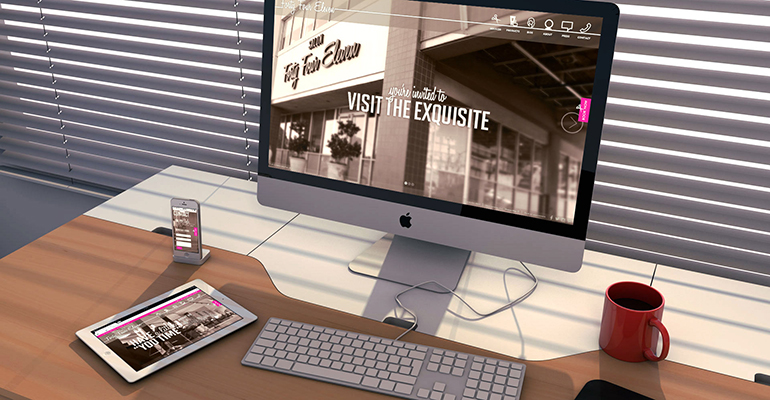You’ll probably agree that it seems like everyone is on their smart phone all of the time. Just walk down the street and you’ll probably see most people face down, scrolling away. In fact, over 60% of online searches come from a mobile device. What does this mean for your business? Having a mobile friendly website is no longer enough to ensure a positive user experience for visitors – you need to have a responsive website.
But what’s the difference? A mobile friendly site will look good on mobile devices, but it might have some issues, missing functionality, and it will be harder to navigate on certain devices. A responsive site is designed to adapt to the size of any screen that it’s being viewed on. This ensures a consistent, optimized, user experience across devices.
In 2017, 51% of customers reported using mobile devices to discover new brands and products. When potential customers are searching for help on their phone, your website needs to be easy to find and use. If a user comes to your site and is frustrated or can’t find what they’re looking for, there’s a 61% chance they’ll leave – and likely go to a competitor.
Take a look at these 5 reasons why your company should invest in a responsive website:
1. Great User Experience
Having a responsive layout and design guarantees that all users, across all devices, will have the best experience possible interacting with your brand online. It’s also a great way to ensure that mobile users are seeing the most relevant and valuable information first, since you can tell your website to ‘hide’ particular content when being viewed on a mobile device.
2. Social Media Engagement Increases Website Traffic
According to ComScore, 55% of social media consumption and interaction happens on mobile devices. If the content you are sharing on your website isn’t mobile-friendly, you’ll frustrate visitors and lose potential customers.
3. Improved Search Engine Optimization (SEO)
With Google’s algorithm update, having a responsive design increases your website’s visibility on search engines because of its responsive, mobile design. Sites with good mobile experiences show up higher in search results than sites with poor mobile experiences – just ask Google!
4. Future-Proof Your Site
Another benefit of a responsive design is that it ensures your website will display correctly on newer devices – from smart phones to watches, TVs, tablets, and more. You don’t want to get caught in the trap of having to redesign and reformat your website every couple of years.
5. Lower Cost of Maintenance and Management
Running two versions of your site is expensive and time consuming. As is constantly redesigning your site to accommodate newer technology and mobile devices.
With responsive sites being the standard, it’s important to make sure your site is the best it can be to attract and convert potential customers.


